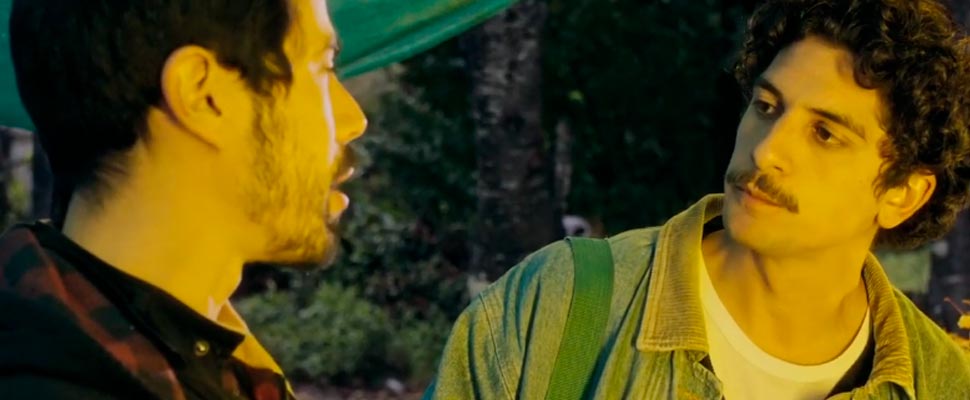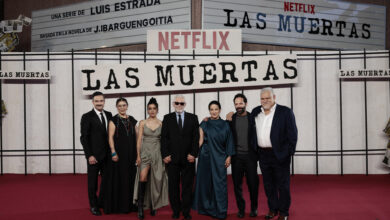10 Latin American LGBT Movies You May Not Know About
In the Month Of LGBT Pride, We Recommend These Films Produced in Latin America.

These are 10 films whose main theme is related to the LGBT community and which were also made in Latin America. Photo: YT-DCI Distribution
LatinAmerican Post | Luis Hernández Liborio
Listen to this article
Leer en español: 10 películas LGBT latinoamericanas que quizás no conocías
The month of LGBT Pride is here. It is a good time to see these 10 films whose main theme is related to the LGBT community and which were also made in Latin America. Most of these films are recent, so they allow us to appreciate the current situation in which this community finds itself in different parts of Latin America.
1. The Blonde One, Marco Berger. Argentina, 2019.
Argentina is one of the countries with the highest production of LGBT-themed films in the region, among the most recent, Marco Berger's The Blonde One stands out. In this slow-paced story, we see Gabriel, a worker who rents a room in Juan's apartment. Due to the nature of their jobs, both live in a macho environment. However, coexistence between them generates tension that leads to a relationship that they try to keep hidden.
2. Strawberry and Chocolate, Juan Carlos Tabío and Tomás Gutiérrez Alea. Cuba, 1993.
Although this film is not recent, it won multiple awards, including a Goya and an Oscar. Strawberry and Chocolate tells the story of Diego, a homosexual artist against the system who meets David, a young man convinced of the ideas of the communist party in his country. Although they are apparently polar opposites, they manage to understand each other by harshly criticizing the problems of the Castro's Cuba.
3. José, Li Cheng. Guatemala, 2018.
Central America is one of the most macho and dangerous regions for the LGBT community. It is here where José takes place. In this movie, the protagonist maintains a hidden relationship in a difficult environment both because he is indigenous and homosexual. Despite living in the city, poverty and homophobia are no less dangerous.
4. Tremors, Jayro Bustamante. Guatemala, 2019.
Bustamante is the director of films such as Ixcanul and La llorona , nominated for the Goya. In Tremors, he shows us the story of Pablo, a white, upper-middle-class, married Guatemalan man who maintains a relationship with Francisco. The problems begin when his powerful family discovers the relationship. The film makes an interesting critique of conversion therapies.
5. Retablo, Álvaro Delgado Aparicio. Peru, 2017.
This film stands out for showing homophobia in an indigenous environment, in addition to being spoken in Quechua. As in Tremors, homophobia destroys the relationship of a family that suffers not only its internal problems but also the punishment of its community.
You can also read: Reasons not to miss Disney's new Cruella
6. The Strong Ones, Omar Zúñiga Hidalgo. Chile, 2019.
Samuel, a young architect, has won a scholarship to study in Canada, but before leaving he must say goodbye to his family who lives in southern Chile. There he meets Antonio, a sailor with whom he falls in love. Their relationship must deal with homophobia from Samuel's family, showing that homophobia is still a common problem in Latin America.
7. The Heiresses, Marcelo Martinessi. Paraguay, 2018.
The film caused great controversy in its country, despite achieving two Silver Bears at the Berlinale and world recognition. In The Heiresses, we see the story of Chela and Chiquita, two older upper-class women that have a decades-long relationship. However, when they run out of financial resources they have to face real life, Chiquita is imprisoned for debts and Chela must find a way to earn a living, that is where her personal discovery begins. We can also see a critique of the upper-class conservative and religious society of Paraguay, which can also apply to other parts of Latin America.
8. Fireflies, Bani Khoshnoudi. Mexico, 2018.
In the Port of Veracruz Ramín, an Iranian migrant, looks for a living while finding a way to travel to Europe. Meanwhile he meets Guillermo, a Salvadoran migrant with whom he maintains a friendly relationship. The film shows the situation of migration in Mexico, in particular of those who are homosexuals, victims of homophobia and violence.
9. Green butterflies, Gustavo Nieto Roa. Colombia, 2017.
This film tells us the story of Mateo, a young man who is against bullying. Because he defends his classmates, his greatest rivalry is against Lucas, a classmate, and against the conservative director of the school. Along this path, Mateo discovers his homosexuality, which does not go unnoticed by Lucas. The tackles bullying and the consequences it can have if actions are not taken to stop it.
10. Hoje Eu Quero Voltar Sozinho, Daniel Ribeiro. Brazil, 2014.
The Way He Looks is a hopeful film, unlike some of the dramas on the list. Leo is a blind middle-class student who falls in love with Gabriel, his schoolmate. Although they face some difficulties, homophobia is not stigmatized like in other films. It also stands out for showing the life of a homosexual person with a disability, which is why Leo faces not only the discovery of his sexuality but also the protection of his parents.




